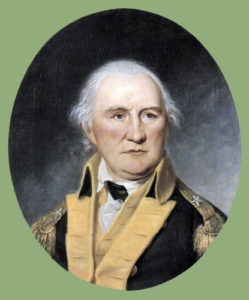 On June 8, 1789, James Madison introduced his proposed amendments to the Constitution, which would eventually become known as the Bill of Rights. On September 25, 1789, the First Federal Congress of the United States proposed to the state legislatures twelve amendments to the Constitution.
On June 8, 1789, James Madison introduced his proposed amendments to the Constitution, which would eventually become known as the Bill of Rights. On September 25, 1789, the First Federal Congress of the United States proposed to the state legislatures twelve amendments to the Constitution.
The first two, concerning the number of constituents for each Representative and the compensation of Congressmen, were not ratified. The original second amendment proposed by the First Federal Congress dealt with the compensation of members of Congress. Although rejected at the time, it was eventually ratified on May 7, 1992, as the 27th amendment.
Articles three through twelve, known as the Bill of Rights, became the first ten amendments to the U.S. Constitution and contained guarantees of essential rights and liberties omitted in the crafting of the original document.
Raising of the Hampshire Regiment
 On June 7, 1781, General Daniel Morgan wrote to General William Darke from Winchester, Virginia and authorized him to raise a regiment in the counties of Berkeley and Hampshire. General Darke hastened to execute the order, and the organization of the troops was speedily completed and they were put in the field. This was the famous Hampshire Regiment, which witnessed the surrender of Cornwallis to the united armies of America and France at Yorktown on October 19, 1781.
On June 7, 1781, General Daniel Morgan wrote to General William Darke from Winchester, Virginia and authorized him to raise a regiment in the counties of Berkeley and Hampshire. General Darke hastened to execute the order, and the organization of the troops was speedily completed and they were put in the field. This was the famous Hampshire Regiment, which witnessed the surrender of Cornwallis to the united armies of America and France at Yorktown on October 19, 1781.
The town of Darkesville in Berkeley County is named for him. 
Remembering D-Day
 The Normandy landings were the landing operations of the Allied invasion of Normandy, also known as Operation Neptune and Operation Overlord, during World War II. The landings commenced on Tuesday, 6 June 1944 (D-Day), beginning at 6:30 AM British Double Summer Time (UTC+2). In planning, D-Day was the term used for the day of actual landing, which was dependent on final approval.
The Normandy landings were the landing operations of the Allied invasion of Normandy, also known as Operation Neptune and Operation Overlord, during World War II. The landings commenced on Tuesday, 6 June 1944 (D-Day), beginning at 6:30 AM British Double Summer Time (UTC+2). In planning, D-Day was the term used for the day of actual landing, which was dependent on final approval.
The assault was conducted in two phases: an air assault landing of 24,000 American, British, Canadian and Free French airborne troops shortly after midnight, and an amphibious landing of Allied infantry and armoured divisions on the coast of France commencing at 6:30 AM. There were also subsidiary ‘attacks’ mounted under the codenames Operation Glimmer and Operation Taxable to distract the German forces from the real landing areas.
The operation was the largest amphibious invasion of all time, with over 160,000 troops landing on 6 June 1944. 195,700[6] Allied naval and merchant navy personnel in over 5,000[5] ships were involved. The invasion required the transport of soldiers and material from the United Kingdom by troop-laden aircraft and ships, the assault landings, air support, naval interdiction of the English Channel and naval fire-support. The landings took place along a 50-mile (80 km) stretch of the Normandy coast divided into five sectors: Utah, Omaha, Gold, Juno and Sword.
Battle Born
 The Battle of Philippi — also known mockingly as “The Philippi Races” — was fought on June 3, 1861, in and around Philippi, Virginia (now Barbour County, West Virginia) as part of the Western Virginia Campaign of the so-called Civil War. It was the first organized land action in the war, but is often treated dismissively as a skirmish rather than a significant battle. Estimated casualties were 4 US, and 26 CSA.
The Battle of Philippi — also known mockingly as “The Philippi Races” — was fought on June 3, 1861, in and around Philippi, Virginia (now Barbour County, West Virginia) as part of the Western Virginia Campaign of the so-called Civil War. It was the first organized land action in the war, but is often treated dismissively as a skirmish rather than a significant battle. Estimated casualties were 4 US, and 26 CSA.
Col. Thomas A. Morris, temporarily in command of Union forces in western Virginia, mounted a two-prong advance under E. Dumont and B.F. Kelley against a small Confederate occupation force at Philippi under Porterfield. Kelley marched on back roads from near Grafton on June 2 to reach the rear of the town, while Dumont moved south from Webster. Both columns arrived at Philippi before dawn on the 3rd. The resulting surprise attack routed the Confederate troops, forcing them to retreat to Huttonsville. Although a small affair, this was considered the first major land action in the Eastern Theater.
Phil Hudok of Huttonsville is the Constitution Party’s candidate for U.S. Congress this year. His website is http://hudok.com